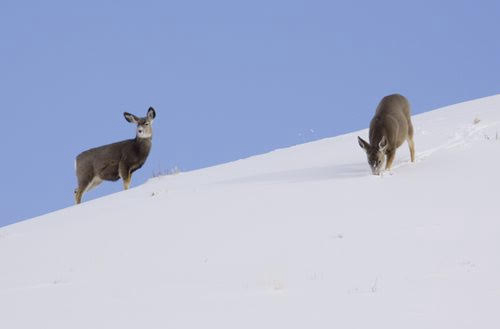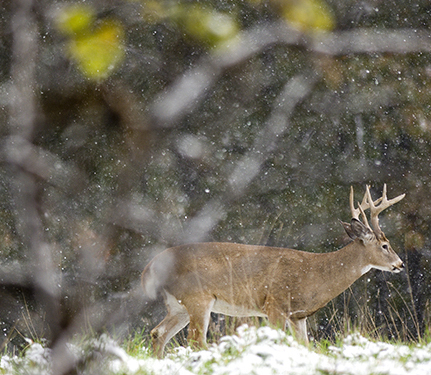Christmas Deer
By Glen Wunderlich
With only one week remaining in the late antlerless deer season in southern Michigan, longtime friend, Joe, and I agreed to an afternoon hunt on Christmas day. Both of us had celebrated the holiday with our extended families earlier in the week and it was Joe’s only day off for the week, so why not?
The “winter” weather could not have been more cooperative. The welcoming sun shone brightly and the northerly winds forced the issue as to which stands would be best for each of us late-season hopefuls.
Never can I recall such friendly weather for an entire season – and, that covers a few decades. Clothing for the mid-40-degree temperatures was light and the insulated hunting boots were left behind. Warmer weather means that deer are not prone to much movement in search of nourishment to sustain their needs; their fuel requirements are less. Such obliging weather has been one solid reason that hunters have had the success they’ve had this year in spite of the declining deer populations statewide.
Preliminary deer check-station indications are that hunters are taking more adult deer as a percentage of overall kill ratios. Several harsh winters in a row in the Upper Peninsula have taken a toll on weaker deer, but natural selection means the strongest survive. This fact, plus antler-point restrictions in the U.P. are driving forces behind the quality hunters have seen, even though total kill numbers are down considerably.
Larger, healthier deer are being reported statewide and our seasonal take seems to corroborate these findings having taken deer of 2 ½, 3 ½ and 6 ½ years of age. Giving up nothing in firearms performance, Joe and I were toting modern muzzleloading rifles in one more attempt to fill the freezer.
My strategic location had me overlooking the healthy remnants of a brassica food plot replete with about half of its original foliage plus an estimated 90 percent of the turnip bulbs fully intact – another sign of unseasonal temperatures. As the sun began its daily descent on the horizon, I noticed a lone bird atop a spruce tree some 80 yards away. My Burris binocular confirmed a beautiful male Eastern bluebird with its rosy red breast reflecting the sun’s rays.
The once-threatened song bird, bug eater was enjoying the last bit of warmth, as I scanned a tree line of spruces. To my naked eyes, it looked as though someone had placed some Christmas ornaments on many of the upper tree branches, so I pulled up the glass to get a better look. To my amazement, the trees were adorned with numerous bluebirds and house finches – all taking their respective places at the tips of branches gleaming in the waning sunlight, as each one faced the solar warmth before retiring for the day. It was truly a spectacular Christmas sight I’ll not soon forget.
As prime time neared, a mature doe fell to a perfectly placed Barnes bullet from my belching smokepole. Darkness had descended before the field dressing chores were complete and a rare Christmas full moon had risen as an exclamation point to Mother Nature’s bountiful blessing in Michigan’s great outdoors.







